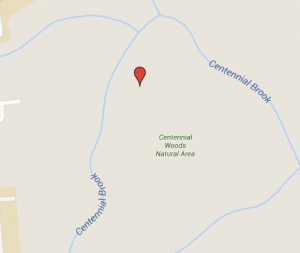Human and the Environment: Intertwined
Reevaluating Past Sites: Beaver Marshland

(https://www.google.com/maps/@44.4789356,-73.1877208,17z/data=!3m1!4b1!4m2!6m1!1szwdaAHTqNtsA.kwGjgs0iWyzI?hl=)
Centennial Woods is often called an Urban Forest. The ecosystems within Centennial Woods are often valued because it provides wildlife habitat, safe passage for wildlife movement corridors, and Wetland areas which help increase the biodiversity within ecosystems and provide many ecosystem services such as acting as nurseries for small invertebrates and amphibians through its many water systems. This ecosystem also provides many benefits to human through both recreational, educational and financial needs. For example, Centennial Woods offers opportunities to immerse themselves in activities such as a cross-country skiing, walking, jogging, snowshoeing, and bird-watching. Centennial woods also offers the City of Burlington a large amount of electric power which sits deep into this natural area creating revenue. However, despite Centennial woods offering these tremendous beneficial properties, humans and human activity act as a parasite destroying centennial woods such as causing large disturbances including clear-cutting forest and causing large erosion problems within this specified area. Also, the increase in visitors within this forest often times cause for increase amount of waste and vandalism to occur. Lastly, because of human involvement within this ecosystem, Burlington International Airport has created unwanted noise and air pollution, which is negatively affecting wildlife. I have become an integrated part of Centennial woods as I am also a continuous visitor.